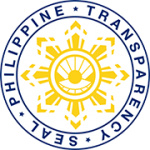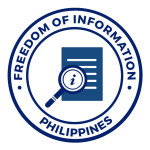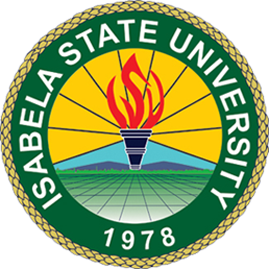KNOWLEDGE AND TECHNOLOGY GENERATION AND MANAGEMENT
- Knowledge and Technology Generation
The University as a Higher Education Institution is supposed to be the generator of knowledge and technology. Towards this end, it shall pursue this based on the following R&D thrusts and strategies.- R&D Thrust
For the generation of new knowledge and technology, the R&D thrusts of the University are geared towards the conduct of basic, strategic, applied, technology development, technology adaptation and integration, social science and higher education research.- Basic research is either experimental or theoretical work undertaken to acquire new knowledge of the underlying foundations or phenomena and observable facts without any particular or specific application or use in mind.
- Strategic research is a research undertaking that links basic research and applied research.
- Applied research is an investigation done to acquire new information directed towards a specific aim or objective. It is drawn on existing knowledge gained from previous researches and practical experiences that is directed to producing new materials, products, devices, processes, systems and services thereby improving substantially those already produced or installed.
- Technology development or invention is a research undertaking that put together bits and pieces of information to produce something tangible and useful.
- Technology adaptation and integration is research that fine tunes the technology developed to adjust to the environment and fit into end-users’ practices.
- Social science and higher education are integrative studies in linguistics, sociology, anthropology, arts and humanities which are directed towards policy development on governance and management of higher education and directed to install new processes, systems and services to improve instruction. Based on stage of the development continuum, other research typologies are used in referring to research.
- Upstream research consists of basic research conducted to generate new knowledge of the underlying foundations or phenomena and observable facts without any particular or specific application or use.
- Midstream research consists of applied research organized and undertaken to acquire new information directed towards a specific aim or objective. It is usually drawn on existing knowledge gained from previous researches and/or practical experiences which are directed to producing new materials, products, devices, processes, systems and services thereby improving substantially those already produced or installed.
- Downstream research consists of a limited research work dwelling on the verification of the adaptability of technologies under different local conditions.
- R&D Strategies
In the pursuit of the above thrusts, the following strategies are to be employed by the University:- Strengthening research management through improved coordination in planning and programming of research activities involving key stakeholders particularly the faculty and staff, students, industry, manufacturing, and other academic and research institutions.
- Improvement of resource sharing and utilization among linkage research institutions, cluster campuses, colleges and academic departments.
- Enhancement of resource generation activities in support to research projects and activities, human resources development and improvement of research facilities.
- Strengthen research activities through increased research programs and projects to be packaged, endorsed for approval, and for implementation.
- Strengthen the formulation of R&D policies sustaining the research allocation of 10 percent to 20 percent from the supplemental budget for research and providing mechanisms for their effective and efficient utilization.
- Cultivate distinguished multidisciplinary research fields and pursuing research excellence by building a quality research environment and a dynamic research community through the provision of sustainable financial support
- Encourage international research cooperation through the formation of alliances with locally and internationally known research centers and building mechanisms for cooperation or scholarship exchange programs with them.
- Encourage industry-university partnership by fostering research cooperation through sharing of science-based knowledge systems.
- Explore new strategies in research management along monitoring and evaluation (M&E), fund and resource generation, institutionalization of RMIS through enhanced ICT and IEC, and formulation of R&D management priorities through complementation, integration and resource sharing.
- R&D Thrust
- Management
To fully benefit from the knowledge and technology generated from R&D, the University shall adopt a KTM system by implementing specific thrusts and strategies.- Knowledge management includes acquisition, creation, dissemination and application of knowledge, and the adoption of insights and sharing of research results and approaches, best practices and success stories.
- Technology management includes technology adaptation and integration; technology validation; technology piloting; technology promotion, transfer, and commercialization; and provision for the information and technology needs of clients.
Very essential to KTM is that the knowledge or technology to be managed must have passed critical verification and validation. It should have undergone the rigorous peer review process by the scientific community through its (knowledge or technology) publication in an international peer reviewed journal. It is only after such a publication before it may be considered an established knowledge or a mature technology that is ripe for KTM.
- Thrust for R&D Utilization (KTM)
i. Technology for adaptation and integration. A technology is for adaptation and integration if it satisfies the following criteria: - Conducted in farmers’ field and only a component of the technology is involved;
- Tested in technology generation research for at least one season;
- Technology shows good economic viability potential based on technology generation research; and
- Good potential for acceptance by farmers and commercial producers.
ii. Technology verification. A technology is for verification if it can be incorporated in a package of technology that has potential for improving existing farmers’ practices. Specifically, it should satisfy the following: - It is an integrated technology conducted in farmers’ fields;
- It has been tested for 2-3 seasons in the technology generation trials;
- It has shown economic viability and technical feasibility in technology generation trials; and
- Its computed return based on technology generation trials is better than that of farmers’ practices.
iii. Technology piloting. Technology piloting, also referred to as action projects, is an innovative work undertaken to: - To confirm and demonstrate the feasibility of actually applying a technology using the community-based approach; and
- To gauge end user’s reaction to introduction of improved technologies and identifying potential problems related to its wider dissemination, utilization and adoption so that these can be fed back to researchers.
iv. Technology packaging. This involves the production of material technologies (seeds, breeds, tools, equipment) and the training of farmers and extension agents. v. Technology commercialization. Commercialization is an activity involving the application of technologies on a commercial scale by identified entrepreneurs or used primarily to increase one’s income or profits and productivity in a much wider scale. - Strategies for R&D Utilization (KTM)
i. Building on earlier successes KT generators (scientists and researchers) and KT adaptors through cooperative initiatives from as early as the planning stage of R&D agenda setting to the production KT phase; ii. Developing and harmonizing KTM policies among HEIs and R&D institutions, government agencies, private entrepreneurs and venture capitalists; iii. Developing University mechanisms for KT transfer by establishing KT ownership and upholding IPR protection for creative works of scientists; iv. Providing more resources for KT generation and transfer expenditures; v. Providing more full-time R&D personnel; vi. Imposing strict IPR scheme to emphasize the importance of patent application and the protection of IPR assets for commercialization R&D results; vii. Packaging technologies for commercialization; viii. Cultivating innovative enterprises by developing product designs and brand names to enhance the added values of developed products; raising research standards cutting-edge science; and utilizing IPR and nurturing innovation and entrepreneurialism.
POLICY RESEARCH ADVOCACY
- Thrust
- Putting in place the enabling environment of R&D management;
- Improving policy advocacy for S&T development;
- Improving the wellbeing of the faculty, support staff, and students;
- Pursuing environmental protection and sustainable development; and
- Appropriately addressing global climate change issues.
- Strategies
- Formulating and facilitating approval of policies for implementation to improve enhance R&D operations;
- Conduct policy related researchers (e.g. impact assessments);
- Indorsing, advocating and supporting S&T policies;
- Promoting renewable energy resources, conservation, and recycling systems;
- Creating and promotion of green projects; and
- Providing for sufficient funding to recruit specialized experts to participate in research projects, teach in specialized fields, or assist in R&D management.
CAPABILITY BUILDING GOVERNANCE
- Thrust
- Developing and further enhancing the R&D workforce; and
- Cultivating distinguished fields and pursuing academic excellence.
- Strategies
- Effectively recruiting, tapping, and training faculty and R&D personnel;
- Cultivating researchers and personnel services in the areas of interdisciplinary, multidisciplinary or trans-disciplinary systems R&D undertakings;
- Strengthening research on higher education and social sciences to cultivate a science literate academic community;
- Cultivating the workforce needed by the industry by linking the concept of career development with industrial development;
- Strengthening and promoting Industry-University R&D cooperation;
- Cultivating distinguished fields and pursuing academic excellence;
- Building a quality research environment by developing distinguished research fields and integrated research projects through the provision of long-term financial support;
- Encouraging international research cooperation with international research centers, building scholarship exchange programs with foreign academic research institutions, and establishing agreements on bilateral S&T cooperation;
- Cultivating S&T human resources through participation in international conferences, seminars and workshops, foreign research projects, post-doctoral programs in foreign countries; and
- Recognizing the performance of scholars for their significant contributions in various fields by providing financial incentives.




